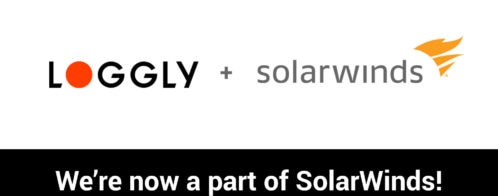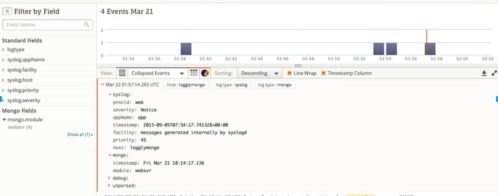Maximizing conversions in a freemium webapp – part one
We’ve been on the investor tour for the last month and a half at Loggly. We spent about a month working on the investor presentation, executive summary and revenue model to prepare. Based on the better feedback we’ve received, we’ve continued to refine the pitch and plan.
We’ve heard everything from “you need to show me how this is a billion dollar company” (lol wut?) to “move the team slide just below the problem statement”. Bad advice aside, I remain focused on our market size and, in particular, the user conversion assumptions that go along with it.
I’ll be transparent here. I expect Loggly’s model to yield a 10-20% conversion rate to paid customer from a signed up freemium account. While I have good justifications for those numbers, posts like this, by Derek Haynes of ScoutApp, would appear to contradict my assumptions, especially with comments like “The 1% rule is the Pi of freemium web apps!”. In all fairness he has an excellent point about focusing on retention optimization, but should we so blindly ignore our conversion pipe just because of the 1% rule says we’ll get the users?
Theories != Rules
As it turns out, the “1% rule” is based on observations on other websites and expected conversion from a site visitor to a paid user. Coincidentally enough, this assumption echos the controversial content creation theory and smacks of Chinese Math.
The main problem with this approach is it completely and utterly ignores the remainder of a given site’s user pipeline. Pipelines, or funnels, are the bread and butter of any sales driven organization. While sites like YouTube may have simple funnels, sites like Loggly are a bit more complicated, and a missed assumption somewhere along the way can turn your assumed 1% conversion into a .1% conversion fairly quickly. To illustrate, here’s a short list of what we’ll be tracking at Loggly (per month):
- number of ad views on ad network
- number of visits
- uniques
- % visits and uniques from ads
- bounce rate
- content consumed (price sheets/videos)
- participation in the demo (low friction getting started)
- freemium signups
- use of a freemium account
- use of certain features in the freemium account
- conversion rate to paid accounts
- use of paid account
- logging rates
- upgrades from one paid tier to another
It’s within this pipeline that we focus our attentions to help maximize conversions from visit to paid user. Not surprisingly, the devil is in the details.
Care and Feeding of Your Pipeline
Portions of a pipeline need to have estimated percentages assigned to them, and then you need to actively monitor those conversions from step to step when the site goes live. I’ll start with the expectation of 1 conversion from 100 unique visits to a paid account and then project assumptions about the other portions of the pipeline:
- 10,000 ad views yields 100 unique visits (1%)
- 100 unique visits yields 20 content consumers (20%)
- 20 content consumers yields 10 demo participators (50%)
- 10 demo participators yields 5 freemium signups (50%)
- 5 freemium signups yield 1 paid account (20%)
Notice this gives us our 1% conversion from unique visit to paid user, but still shows a 20% conversion from freemium to paid account. Now we do a breakdown for the intermediate steps, and find places we can optimize. Your mileage may vary, so make sure you understand your steps, and measure the effects of changes on your conversion numbers when you are able to do so!
Content is King
Based on prior experience, we know the subject material of Loggly should yield decent conversions from a visitor to content consumer, where the parties are interested in the offering. At previous engagements we were able to get 10K unique video views a month off 100K visits per month. Add in another 10% viewing pricing, examples, etc., and 20% starts to seem reasonable. By driving viewing content, we increase stickiness, educate the users about the service, and increase conversions to freemium signup.
Once the user is viewing content, we want to convert them to using the demo, and then on to creating an account later. Loggly’s demo will actually be a live demonstration of the service using the user’s own content, but it won’t require the user to sign up in the traditional sense. By flipping the signup process on it’s head, we get the user using the features first, then ask them for account information after they’ve decided they like the service. All in, and based on the frictionless signup, we expect 25% of users who viewed advanced content to convert to a freemium account.
Get Out of the Way!
Remember, your signup form is a HUGE barrier to users. If you require them to provide 12 fields of data to fill out, it’s that much less likely you’ll get a signup out of the deal. Just look at this signup form – I gave up after 5 minutes of trying to fill it out properly (picky password, clearing fields on submission, etc.), even though I’m highly interested in IBM’s offer. Most people won’t spend more than a minute or so filling out your signup form. The lesson here is to get out of the way so a user can start using your service quickly.
Finding Cash in the Pipe
Remember, freemium accounts are not the same as free trials. A free trial expires, but may contain all the features of a paid account. A freemium account doesn’t expire, and usually contains a subset of features of the paid account. By keeping the freemium account active for a longer period of time than the trial (and by keeping the cost of providing services to it low) you extend the amount of time a freemium user can convert to a paid user. While this may not show up in the first few months, over time it will have a compound effect on your conversions as users desire more features from the service.
At this point in the pipeline we are at a 5% conversion rate from visitor to freemium account, which so far seems to be a reasonable assumption. If we take the 10-20% estimated conversion rate to paid assumptions, then we arrive at a .5% to 1% conversion rate from visitor to paid account, which is within striking distance of our 1% goal.
In the next segment of this post, I’ll discuss analyzing how users use their accounts, and steps you can take to maximize conversion from freemium to paid.
Edit (11/12/09): Fixed my bullets in the second list.
The Loggly and SolarWinds trademarks, service marks, and logos are the exclusive property of SolarWinds Worldwide, LLC or its affiliates. All other trademarks are the property of their respective owners.

Hoover J. Beaver


